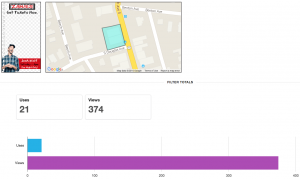
As a consultant, you know your strengths better than anyone.
Your clients rely on you for your expertise. They have problems they need to solve or goals they want to meet, and they know you can help them get there.
There’s a good chance you already offer a range of services to help make your clients more successful.
If you’re a marketing consultant, you may specialize in one area — like email marketing — but also have expertise in other areas — like social media marketing, content marketing, website design, or SEO.
You may also have relationships with outside consultants who possess skills adjacent to what you’re offering, those consultants can help you expand your business and take some of the work off your hands.
Finding new and creative ways to bring these services together is guaranteed to make your clients more successful, and can redefine the value of your business.
I recently had the chance to sit down with Erin Schweppe, senior manager of marketing services here at Constant Contact, to talk about the different ways consultants can bring their services together.
Erin has made it her mission to help consultants learn to layer their services to increase their offerings.
What does it mean to layer your services? That’s where my interview begins:
Hi Erin! Can you please begin by explaining what exactly is “service layering”?
Service layering is quite literally the notion of building or “layering” services on top of one another as a client’s needs are identified.
This approach enables the most needed (or highest-priority) services to be delivered first and offers a step-by-step path to add services as the client’s needs evolve.
The notion of “layers”, as opposed to “bundles”, offers a less intimidating approach to outsourced services for the cost-conscious business owner, giving them a greater sense of control over how they prioritize and spend their marketing dollars. Oftentimes, these services are provided for recurring monthly fees, purchased as 6-or-12-month packages.
What can service layering do for my business?
In a word, Grow! Service layering allows you to build a long-term, highly valuable ongoing service relationship with each client.
In this way, you’re able to reduce your cost of acquisition by achieving more revenue from a single client and creating a predictable recurring monthly revenue stream rather than acquiring multiple, one-time projects from new customers each and every month.
For example, let’s say you’re a web developer and you charge an average of $ 500 for each new website you design and build. These builds are typically a one-time engagement and often very time intensive. If you have a $ 10,000/month revenue goal, you would need to not only find 20 new clients each month (240 new clients in one year), but also would likely be pushing the limits of your team’s capacity to deliver to reach that revenue goal.
With service layering, you could achieve the same goal of $ 10,000/month with only 20 of those customers by developing a set of recurring services that include any combination of ongoing web updates, email marketing, SEM/SEO, or social media marketing on an average recurring fee basis of $ 500/month.
If you’re outsourcing some of these services, you’re able to scale to more than 20 customers a month and realize an even greater revenue stream.
How do I begin to figure out what other services I can offer my clients?
Service layering is based on the notion that each of your clients have different needs at different times in their business lifecycles. By looking at what you do in the “big picture”, it’s easy to see the variety of related activities needed to ensure marketing success. From there, you can start to identify what gaps need to be addressed for your clients.
To begin, focus first on your core competency and then look at the logical adjacencies from there.
For example, if you’re a web designer, how will you drive traffic to your client’s new site? SEM/SEO? Business listings? Email marketing? Social media marketing?
Once visitors arrive at your client’s new site, what action do you want them to take? Download content? Register for an event? Sign up for a newsletter service?
All of these yield additional marketing needs for your client that you, the expert, can provide in the form of new services.
Once you’ve captured that list, reconcile it against your current client portfolio. Audit their current marketing activities and determine what common areas they need help with. Test those offers with those clients to identify what resonates.
What one tip would you suggest every consultant do when considering what services to offer?
Don’t be a mile wide and an inch deep.
As you begin to build out your services portfolio, develop a network of your fellow Solution Providers (who provide complementary services) to help you deliver on these services, allowing you to remain focused on what you do best.
Your client will develop a trusted relationship with you, but that doesn’t mean that you have to deliver everything for them. Have that trusted network behind the scenes to do that for you.
Going back to our example, if you’re a web designer and you hate writing copy, look for Solution Providers who are copywriters; then outsource that part of to them — your client still works with you, and maybe that copywriter will need a website built for one of their clients someday.
Once I choose a couple new services to offer, how long should I wait before determining if it’s a success or not?
Great question. You should focus on three areas of success — adoption of the service, profitability, and impact to your clients business. Expect at least a three-month runway before you start to see measurable impact on any of these.
Is it possible to offer too many services?
My advice would be to find the perfect balance between reducing the number of vendors that your clients have to work with and become their trusted source of marketing services, while offering services that logically layer with one another.
As noted above, stick with adjacencies to your core business. If you’re delivering a range of marketing services and your clients express a need for legal or financial services, offer referrals to trusted providers of those services.
Have you tried service layering for your business? What new services are you offering? Let us know in the comments below!
Digital & Social Articles on Business 2 Community
(318)
Report Post







